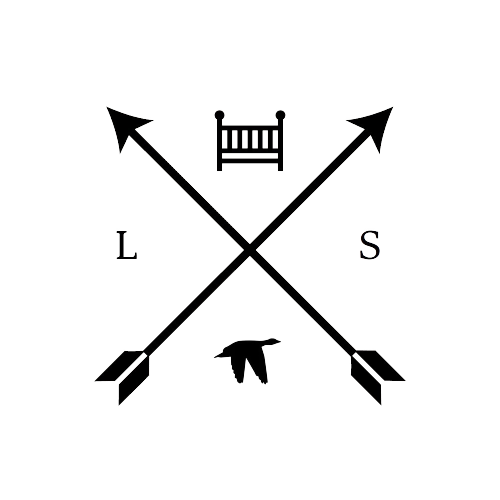As the old saying goes, "you spend a third of your life in bed," so investing in high-quality good bed linens isn’t a bad decision.But, what exactly makes a bed linen "good"? When it comes to "good" bed linen, several factors come into play, such as material, thread count, and weave. Let’s explore these factors in-depth, with a special focus on why White Goose Down is considered as the creme de la creme of bedding materials.
Materials: The Foundation of a Good Bed Linen
Selecting the right material for your bed linens is extremely important. It can make all the difference in terms of comfort, durability, and overall satisfaction with your bedding. A variety of natural and synthetic fabrics are used in the production of bed linens, each with its unique characteristics. Some of the most common materials include:
White Goose Down: Often regarded as the pinnacle of luxury bedding, White Goose Down is derived from the soft, fluffy undercoating of geese. It is an unparalleled insulator, providing lightweight warmth and breathability. Due to its exceptional quality, White Goose Down is the best material for bedding, especially for duvets and pillows.
Cotton: Cotton is a popular choice for bed linens due to its breathability, softness, and durability. Egyptian, Pima, and Supima cotton are considered the highest quality, with extra-long fibers that create a smoother and more luxurious feel.
Linen: Made from the flax plant, linen is a natural fiber known for its exceptional breathability and moisture-wicking properties. It's a perfect choice for those who tend to sleep hot or live in warmer climates. Linen is also eco-friendly and becomes softer with each wash.
Silk: Silk is a luxurious and naturally hypoallergenic fabric that provides a smooth, cool surface for sleep. It's especially suitable for individuals with sensitive skin or allergies. While silk sheets are undeniably elegant, they can be delicate and require more care than other materials.
Microfiber: A synthetic material, microfiber is made from ultra-fine polyester fibers. It's known for its softness, affordability, and easy maintenance. However, it may not be as breathable as natural materials, which can be an issue for hot sleepers.
Thread Count: The Measure of Quality
Thread count refers to the number of threads woven together in one square inch of fabric. A higher thread count generally indicates a denser, smoother, and more durable fabric. It's important not to be swayed by thread count alone, as other factors such as the quality of the fibers and weave can significantly impact the feel and performance of the bed linens.
For a good-quality bed linen, aim for a thread count of at least 200. Premium options usually range between 400 and 800, while luxury linens can go up to 1,000 or higher. Remember that the most luxurious bed linens balance high-quality materials, such as White Goose Down, with an appropriate thread count.
Weave: The Art of Textile Construction
The weave of bed linens determines their texture, appearance, and durability. Different weave styles can create a variety of fabric finishes, such as crisp, smooth, or soft. Some of the most common weaves include:
Percale: A plain, balanced weave that creates a crisp, cool, and matte finish. Percale sheets are known for their durability and breathability, making them ideal for warm sleepers.
Sateen: A weave with more vertical than horizontal yarns, sateen produces a smooth, silky, and slightly shiny finish. Sateen sheets are often heavier and less breathable than percale, making them more suitable for cooler temperatures or those who prefer a luxurious feel.
Flannel: Flannel is created by brushing the surface of the fabric, resulting in a soft, fuzzy texture that provides extra warmth. Flannel sheets are perfect for colder climates or those who prefer a cozy sleeping environment.
Jersey: Jersey sheets are made from a knitted fabric, providing a soft, stretchy, and breathable feel similar to that of a well-worn t-shirt. They're suitable for year-round use and are particularly popular among those who appreciate a casual, relaxed vibe.
Jacquard: Jacquard weaving uses a special loom to create intricate, textured patterns on the fabric surface. This type of weave is often used for high-end linens, adding an element of sophistication and elegance to the bedroom.
Choosing the Right Bed Linen: A Matter of Personal Preference
Picking out the perfect bed linen can be a subjective experience, influenced by your personal preferences and practical considerations like your budget and local climate. However, it's crucial to find the right balance between the factors we've discussed here, such as material, thread count, and weave, to create the ideal bedding setup that caters to your unique needs.
After all, the material is the backbone of your bedding, and choosing the right one can make all the difference between a good night's sleep and a restless one. But don't forget to consider factors like thread count and weave, which can impact the feel, quality, and longevity of your bedding. It's all about finding the sweet spot that strikes the perfect balance between luxury and practicality.
So, whether you're a hot sleeper or live in a cold climate, have a tight budget, or prefer to splurge on the best quality materials, taking the time to consider these essential elements will help you create a bedding setup that you'll love to crawl into every night.

